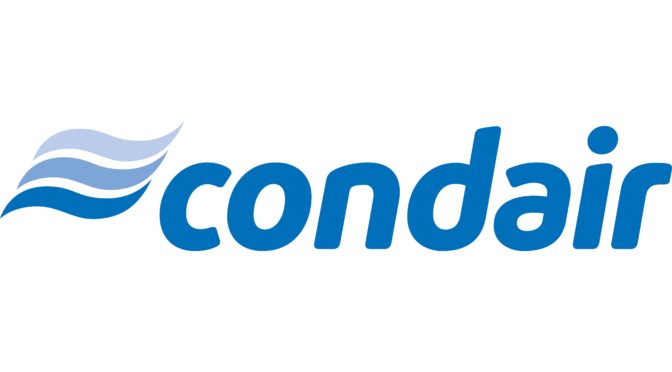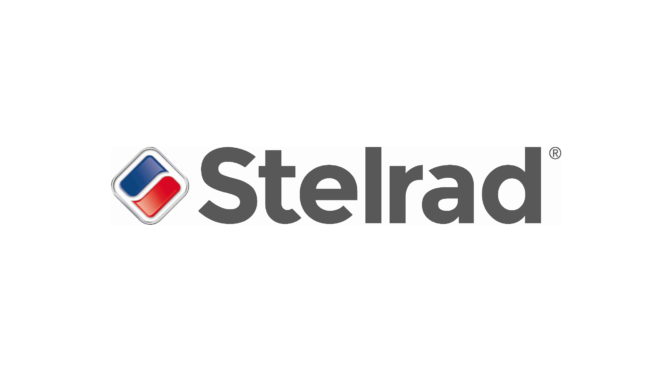Monthly Archives: September 2024
New Condair RS Steam Humidifier
Story
Condair is launching an updated version of its most popular steam humidifier, the Condair RS. As well as a new outer case design, the resistive steam humidifier now incorporates the latest internet-connected technology that allows remote monitoring and troubleshooting by the manufacturer.
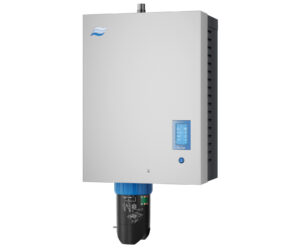
Dave Marshall-George, UK & Ireland Sales Director at Condair, comments, “The Condair RS has long been the industry-leading resistive steam humidifier, with its unique scale collector tank allowing easy removal of limescale from the system. Now with Internet-of-Things connectivity, it once again pushes the boundaries of steam humidifier technology. Customers now have the option to have the manufacturer remotely monitor their humidifier’s performance via the Condair Cloud.
“This cutting-edge technology gives customers the peace-of-mind that their humidity control is constantly being managed with the expertise only the manufacturer can provide. With this IoT option, Condair can now support its customers every step of the way, from initial system design, manufacture, supply and install, all the way through to every-day operation and routine servicing.” Dave concludes.
A new touchscreen user interface on the Condair RS operates like a smartphone, in that users can navigate through clear icon-based menus with scroll, slide and press functionality. As well as intuitive control over operation, the controller offers historic performance and settings reporting, service history, error reporting and an Excel-based download to USB function.
Alongside these new features, the Condair RS still incorporates its unique scale management system that has made it so popular. A removeable tank sits underneath the boiling chamber, collecting the scale as it detaches from the heating elements during normal operation. In-house maintenance staff can routinely drain the system and empty the scale from this tank, without opening the main unit housing. This significantly prolongs the periods between major service visits and prevents on-site drainage problems from chunks of scale being sent to drain.
Other innovative features include a “cold-water pool” that prevents any blockages around the water inlet or drain outlet. The boiling chamber has a twin-wall design with the water inlet and drain outlet being situated in an area between these walls. The temperature of this area is kept low enough to prevent scale formation, thus eliminating any possibility of plumbing blockages due to limescale.
The Condair RS range offers comprehensive capacities with sizes to suit any project. Small single cylinder units start with a maximum output of 5kg/h, with double-cylinder models and master/slave configurations offering up to 160kg/h. Steam humidification can be delivered to a duct via a steam lance, as well as directly to a room with a top-mounted or remotely located blower pack.
The Condair Group is the world’s leading specialist in humidity control and evaporative cooling, with energy efficient, hygienic and innovative technologies for commercial, industrial and heritage applications. Condair is represented in the UK by Condair Ltd, which offers system design, manufacture, supply, installation, commissioning, maintenance and spares. You can find out more by visiting the company’s website at www.condair.co.uk.
View Condair's profile:
Stelrad Radiators Selected For 300 Year Old Property With Heat Pumps – Overcoming Wattle And Daub Wall Construction!
Story
Leading UK radiator manufacturer Stelrad Radiators has recently supplied eleven radiators for a residential refurbishment project on the South Downs. Nothing particularly strange in that you might say until you find out a little bit more about the property and the challenges it posed for the company undertaking the refurbishment.
Enter Michael Paini and his company Option Energy Solutions, based in Steyning near Brighton. He was called out to look at a 300-year old property by soon to become customers – a retired couple with two daughters away at university. They needed a reliable hot water system, able to cope with a high hot water demand and they needed to be able to heat their home efficiently at a comfortable temperature for the whole day.
This is where the challenge gets interesting. The walls were of a wattle and daub construction with alterations made inside the property that made heat loss calculations a theoretical test – one might say, a lottery. Michael found a study by Cardiff University where they published U-Values for old buildings and using this he recalculated with the alterations to modify the U-Value of this specific property. He did this for a number of different fabric types because the property had been altered throughout the years. This was challenging to say the least, but doing so accurately was fundamental to making the project work.
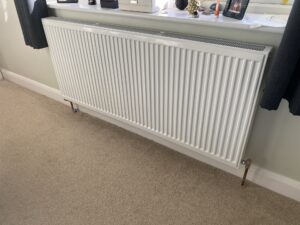
With the help of Heat Geeks new room scan technology, the heat loss was calculated as 12.9kW – right at the limit of a domestic heat pump’s output. The numbers had to be correct and a full heating system design was begun. At the request of the customer the radiators were sized to be optimised at 43 degrees C. Eleven of the thirteen radiators were replaced and the existing underfloor heating was left connected all as a single open loop zone with no buffer. Ther radiators were a mix of K3 and K2 Stelrad Compact radiators, the K3’s designed specifically to work well with low temperature renewable heat pump driven heating systems and providing three panels and three sets of fins to ‘up’ the metal surface area and heat generated by around 50% for a similar radiator footprint as a standard K2. These radiators have proved popular up and down the country in heat pump installations – in new build homes and in retrofit heating systems where the original boiler driven system has been replaced by a heat pump solution.
Other challenges in this 300 year old home included the wall thicknesses for pipework runs. Running large pipes through the property’s timber structure wasn’t an option, so the domestic hot water tank was relocated from towards the centre of the property to the rear utility room and Michael used a system he called ‘split the house’ to upsize the heating pipework. He located the centre point of the heating system pipework, split the system into two halves and installed a new circuit to supply half the load. This was crucial because the only route for the pipes was through a gap between a steel and a joist – and 32mm was the maximum that would fit!
How did the new system perform? Well shortly after installation January brought a cold snap with several days of sub-zero temperatures. The customer reported flawless performance, perfectly stable indoor temperatures at a January efficiency level of 550%. The family is confident their energy consumption backs this up.

Over to Michael to explain some of the detail: “This is probably one of if not the biggest success story I’ve had in my career in the heating industry,” says a rightly proud Michael Paini. “We used a Vaillant Arotherm Plus 12 kW air source heat pump alongside a Vaillant Unistor DHW cylinder and Sensocomfort controller and Sensonet internet control. The radiators I chose were 500mm high Stelrad Compacts – chosen as the windowsill heights in the property limited us to anything higher – and they look very good in the property as well as perform well and provide the levels of comfort heating needed in an elderly property of this type. All in all we were delighted with the components of the system we chose and they operate excellently together. It’s been a major success story for us as a business and them as a family.
“The family being owners of solar panels, and a home battery, meant replacing the old LPG boiler with an electric heat pump was the final step in the customer’s eco home journey. The potential for harnessing these technologies in tandem with one another for maximum benefit was enormous. David – the owner – took a keen interest here because of his dual electricity tariff rates were 30p/kWh peak and 7.5p/kWh off-peak.
“In the winter, when his solar panels aren’t producing enough to charge the battery, he has been using his off-peak rate to heat the hot water cylinder for the day and then charge the battery. He also puts some additional heat into the property toward the end of the off-peak period. When the property cools, the heating then comes on powered by the battery.
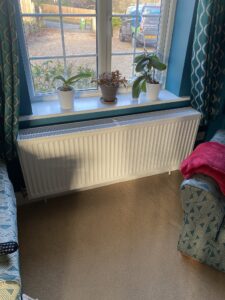
“His COP as measured by the Vaillant controller was over 4 for Dec and 5.5 for Jan. This meant that David could heat his house from as little as 1.36p/kWh throughout off-peak periods, and during peak periods until his battery is depleted. This cost will come down further in future months and will be zero when the solar panels are contributing. It’s an astonishing saving compared to their old fossil fuel system, and in David’s words, they are ‘very warm’. The heat throughout the property courtesy of the Stelrad radiators is consistent too.
“The end result of this project is that amazing results in both comfort and efficiency can be delivered by heat pumps to old houses provided the design is correct. The best design is achieved with consideration given at all steps of the project, from heat loss calculation that is, custom U-Values – through to challenges on-site such as pipe sizing calculations to split the house, and stakeholders should be included in this process optimising design flow temp with the customer’s investment.
All in all an impressive case study for an impressive installation.
View Stelrad's profile:
David Chisnall Joins Condair As Area Sales Manager
Story
Condair has appointed David Chisnall as its new Area Sales Manager for the north of England. David joins Condair with over 25 years’ experience in the HVAC sector, having worked in air filtration and AHU manufacturing sectors.
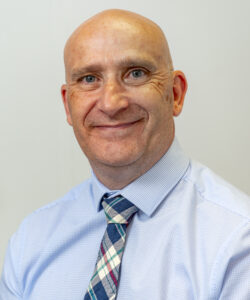
Dave Marshall-George, Condair’s UK & Ireland Sales Director, comments, “It’s great to have David join the Condair team. He brings a wealth of experience with him, and I’m delighted that he’s now representing Condair in this important sales area covering Yorkshire, Lancashire, Cheshire and some of the surrounding areas.”
David commented, “I’m greatly looking forward to getting to know Condair’s customers and supporting them with their humidity control needs. I’m very happy to be joining the market-leader in the humidity control sector. It’s amazing how many different industries Condair works across, for both humidification and dehumidification, and I’m keen to start engaging with our partners across contractors, consultants, OEMs and end-user clients.”
The Condair Group is the world’s leading specialist in humidity control and evaporative cooling, with energy efficient, hygienic and innovative technologies for commercial, industrial and heritage applications. Condair is represented in the UK by Condair Ltd, which offers system design, manufacture, supply, installation, commissioning, maintenance and spares. You can find out more by visiting the company’s website at www.condair.co.uk.
View Condair's profile:
New Addition To ECO-LOGIC Electronic Controller Range
Story
Main features and benefits of the new ECO-200 Controller Range:
The new ECO-200 range of electronic controllers have been designed to be modular, allowing a mix of different types of touch and non-touch control sensors, switches, relays and solenoid valves. Solenoids and relays of different AC / DC voltages can be used.
The controller can be used, for example, for sanitary ware control in bathrooms to control a basin tap for hot and cold water, a shower and WC. Versions can be supplied to control two bathrooms from one controller.
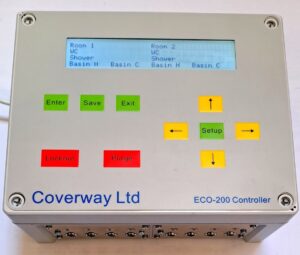
Due to the modular design of the controller it can be used not only for the ECO-LOGIC range of products for new projects, but to control other makes of sanitary ware control systems were spares are no longer available, which is ideal for maintenance and refurbishment work.
Used with the ECO-LOGIC extra low voltage 6V DC bistable solenoid valves, together with the ECO-LOGIC non-touch sensors, the system provides substantial energy and maintenance cost savings together with a very high standard of Health and Safety for the user and maintenance staff.
The ECO-LOGIC range of electronic controls have now been in the market for in excess of 30 years and therefore we have a wealth of experience of product use in all market sectors in regards to maintenance and life time product operation.
All the ECO-LOGIC range of products are designed and manufactured in the UK.
